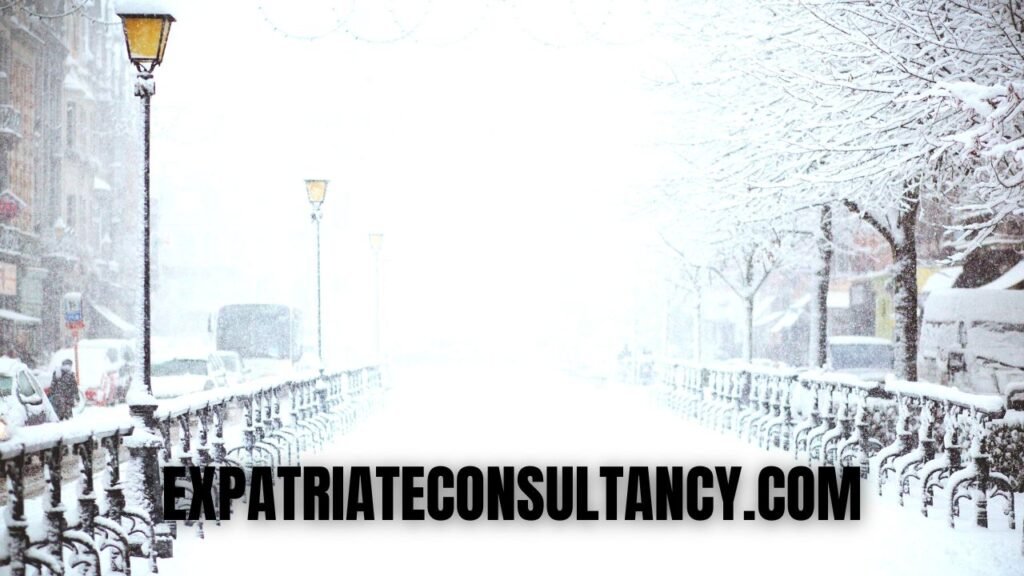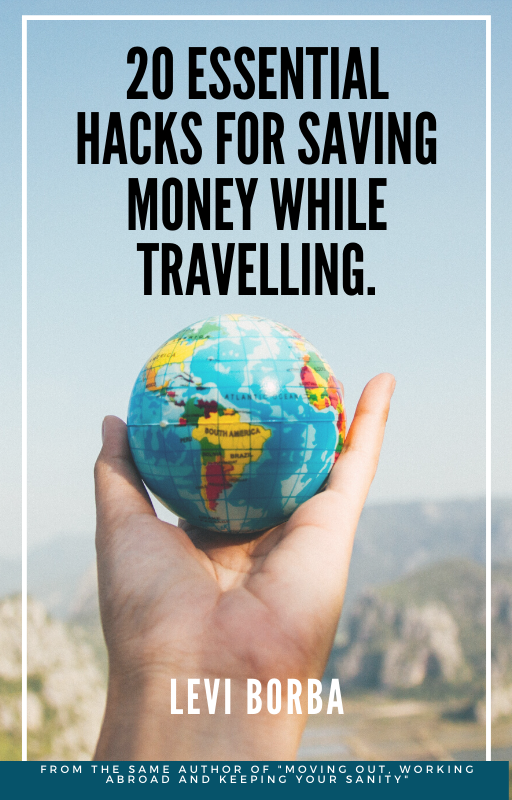Read It If You Are Moving to Europe from a Warm Country (Like Me)
In Europe, there is a sizable amount of expatriates (there are six expat types, discover yours here) from warm places like Australia, Latin America, or the southern regions of the USA. Among them, issues like cultural shock, accommodation, or homesickness receive attention enough. But there are tips for moving to Europe that are almost unheard of.
Things like the “temperature” hindrances are hardly discussed — and here I am not only talking about the weather but also temperament.
The problem is that those forgotten matters affected most, if not all, Latin Americans living in Europe. While some of these issues have inexpensive and easy answers, the lack of attention about them results in us, immigrants, discovering the solution only after having problems.
To be frank, the tips that I will write below may not apply to sun-balmy places like Portugal, Spain or Greece. But if you are moving to countries like Germany, Sweden, or even the UK, keep reading.
These 5 tips for moving to Europe are based on my personal experience as a Brazilian in Poland. They are some of my most valuable insights on moving away from home, and I believe they will be beneficial to you as well.
Check also: The Cheapest Cities to Fly to In Europe and The Most Beautiful Capitals in Europe

1 — Moving to Europe for a Year? Remember about Vitamin D during the Winter!

On average, people that live near the tropics, like Latin Americans, have darker skin tones than most Europeans, particularly those from the continent’s northern and eastern regions.
Darker skin is a convenient adaptation for anyone living in sunny areas such as Brazil’s northeast or the Andean altiplano. Darker tones filter out more of the sun’s ultraviolet B (UVB) rays. They have more melanin, which means they are more protected from sunburn and other problems caused by excessive sun exposure, such as skin cancer.
The issue is that the same UVB rays that cause cancer are also responsible for breaking down cholesterol in skin cells, providing energy for the human body’s vitamin D synthesis. Vitamin D is essential for good health, and a lack of it can cause fatigue, muscle cramps, depression, and immune system problems.
During European winters, the sun is a rare visitor, and days are much shorter. In December, for example, the sunset in Warsaw is around 15:30, and the sky can be cloudy for weeks. In the winter, the total amount of sunlight per month is less than 30 hours. To put it into perspective, there isn’t a single month in Buenos Aires or Mexico City that has less than 130 hours of sunlight.
People in countries such as Poland and Estonia have very white skin, which filters fewer UVB rays. So, even with a small amount of sunlight, they get enough UVB to get the vitamin D they need.
That was not my case. I have olive skin, and I spent my first year in Poland constantly feeling ill and getting sick. I went to the doctor, and he ordered an exam, which revealed that I was severely deficient in vitamin D.
My problem of fatigue and constant sickness was solved after I started taking Vitamin D3 supplements during the fall and winter — something that costs me less than 8 euros per month. Now I can enjoy some charming and inexpensive winter destinations in Europe without suffering from lack of vitamin D.
Check also: What is the best country to retire to? Find out here.
2 — Relocating to Europe from the US? Here we can go to work by bicycle or roller-skaters!

With a few exceptions, such as Santiago, Chile, most cities that I lived in outside Europe are not bike-friendly and have inadequate public transportation.
If you are moving to Europe from the US, likely you also know what I mean.
Others, such as the Brazilian capital (and planned city) Brasilia, have plenty of cycling routes, but the climate makes riding a bike to work or school unappealing — unless the person doesn’t mind arriving swimming in his sweat.
Things are different in Europe. Yes, the climate in the northern regions is still unfavorable for riding a bike to work during a few months of the year, but for the rest of the year, even in a city as cold as Helsinki, cycling is an excellent mode of transportation. When you consider the safer traffic, the flat topography of most capitals, and the high cost of fuel, it’s easy to see why so many people use bicycles to get around.
You don’t even have to own a bicycle. Large European cities frequently provide bike-rental services, where you pay a nominal charge to ride from one location to another. In Warsaw, this service is known as Veturilo, and the first 20 minutes of renting are free. I went riding one of Veturilo’s bikes when I had a doctor’s appointment in the morning. It was a wonderful morning trip that cost me one zloty (less than 30 cents of euro).
As a bonus, it will assist you in absorbing some UVB rays for Vitamin D synthesis (see point 1 above) and staying in shape!

Check also: 9 Excellent Books About Expatriation and Life Abroad.
3 — Avoiding long showers to help your skin (and pockets)
Water prices — not bottled water, but the water used for showering, flushing, and so on — in countries like Brazil, Colombia, and Argentina are significantly lower than in Europe. Water will be far more expensive in middle-income nations such as Poland and Hungary than in Chile, for example.
In Poland, a 10-minute shower with 120 liters of water will cost 1.5 zlotys or 30 cents of euro at the current exchange rate. This is merely the cost of the water; it does not include the cost of heating or other charges. This price would be far higher in Germany, the United Kingdom, or France. The identical 10-minute shower in So Paulo, Brazil, will cost 29 cents of Real, or less than 5 cents of Euro. Showering once a day in Poland will cost you 108 euros, compared to 13 euros in Brazil.
We shower a lot in hot countries. However, I would not recommend continuing this practice in Europe. This will not only save you money, but it will also benefit your skin, because frequent and hot showers cause dry skin and hair, according to American Academy of Dermatology researchers.
Gas is expensive nowadays, but there are some extreme ways to reduce heating costs.
Check also: the ideal European locations to visit on each month.
4 — To have a better quality of life in most European Countries, learn the language.
Learning the language of your new nation will open up a whole new world to you.
This is, unfortunately, something that many of those moving to Europe as an American ignore, and try to live the whole time only using English. This deprives them of so many incredible perspectives of life…
You’ll be able to say “Thanks” or “Please” when shopping at the grocery store or ordering at a café.
Better than that: you will also notice the nuances that shape people’s humor and behavior in their daily activities. Understanding local jokes and insults can give you a good notion of what is humorous and shocking in your new neighborhood.
Lera Boroditsky, a cognitive scientist, confirmed in her studies that language shapes the way we think. As a result, learning the local language allows you to think like a local, increasing your chances of success (or at least survival) in your new nation. What could be a greater incentive than this? Ludwig Wittgenstein, an Austrian philosopher, wrote:
“The limits of my language mean the limits of my world”.
An easy way that I found to learn new idioms is to frequent language exchange groups. Not only will you be able to speak with people in your new location and learn their idiom, but they will be delighted if you offer to teach them your language.
5 — The meaning of a smile varies according to the country
Smiling may appear to most of my people to be a minor gesture. Born in the Brazilian countryside, I learned early on that smiling at people on the street was not unusual. I’m not referring to Joker-style frightening laughter, but to those courteous demonstrations of goodwill that are accompanied by a nod. On a good day, we salute our neighbors, coworkers, and anybody who crosses our path.
The same was true for the first nation I lived in after leaving Brazil, Chile, as well as other countries I visited in the area, even relatively “European cities” like Buenos Aires.
However, I later moved to Poland.
On a certain day, as usual, I greeted one lady that worked with me. Cheers Dominika, everything fine?
She said yes and asked if I was fine too. I answered, “Everything great!”
Then she asked me: So, why are you smiling? Some good news?
After the surprise of hearing such a question, I said, “Oh, not really. But nothing bad happened either”
I’ve been paying closer attention to the facial expressions of individuals around me since that day. This led me to the conclusion that paying attention to physical and behavioral details is beneficial while adjusting to a new culture. — something that I wrote about in my book Moving Out, Working Abroad, and Keeping Your Sanity.
People in Poland do not smile unless they have a compelling reason to do so. A similar trait I saw in other Slavic nations I visited. To mention a few, Slovakia, Serbia, Montenegro, and Russia.
I’m not implying that Slavs are always pessimistic or gloomy. A happy young couple chatting during a walk or a father playing with his daughter are likely to chuckle or perhaps giggle. Outside of such occasions, though, their facial expression is serious.
People may misinterpret joyful expressions. Smiling during a formal talk may be interpreted as not taking it seriously. My wife’s grandmother once felt I didn’t believe her story because I had a smile on my face.
In other cases, folks may assume you’re a moron or have a psychiatric condition., as a Russian proverb says:
Smiling for no reason is a sign of stupidity.
Which side is correct? The slavs that need a reason to smile or the Latin-Americans that need a motive to not do so?
Likely both. That is why humor is one of the 4 dimensions of cultural shock.
Read also: 10 Business-Friendly Countries with Low Taxes
Conclusion: 5 Tips for Moving to Europe

1 — Darker tones of skin filter out more of the sun’s ultraviolet B (UVB) rays and can cause a lack of Vitamin D during the European winter. A lack of Vitamin D can cause fatigue, muscle cramps, depression, and immune system problems. Take a supplement.
2 — Biking is an excellent model of transportation in Europe due to the mild climate during spring, summer and fall. Large European cities frequently provide bike-rental services.
3 — Avoid showering more than once a day, and take a colder shower. This will also benefit your skin, as frequent and hot showers cause dry skin and hair.
4 — To have a better life in Europe, try to learn the language and use it to understand the ethos. Understanding local jokes and insults can give you a good notion of what is humorous or not in your new neighborhood.
5 — Smiling during a formal talk may be interpreted as not taking it seriously. People may misinterpret joyful expressions as stupidity.
Extra content: How Easy Is It to Move to Europe
There are many reasons why people want to move to Europe. The economic situation in their home country may be bad, or they may want to experience a different culture. If you are thinking about moving to Europe, you should take some time to consider the benefits and drawbacks of this move.
The first thing that you must consider is your visa status and what type of visa you need for living in the country where you want to live. This will depend on how long you plan on staying and what type of work you do. You should also make sure that your employer can sponsor your visa so that if something goes wrong with your application, they have already agreed that they will help pay for any costs associated with getting a new visa or returning home if necessary.
Another thing that needs consideration is health care coverage while abroad. Most countries have health care coverage available for visitors, but it may not cover everything that is needed if an emergency arises while living there permanently. If possible, check out what kind of coverage each country offers before making
If you don’t have a job lined up yet, then try looking into work visas or permanent residency permits so that you can legally work in the country where you want to live (I wrote a special article on this subject, called the best countries to start a new life abroad with no money). Once this has been done, then it’s time for the fun part: packing up all your stuff and moving!
Moving to Europe as an American
Moving to Europe as an American requires careful planning and consideration. Europe, with its diverse countries and regulations, presents both opportunities and challenges for Americans looking to relocate. While Europe can offer a different quality of life and work-life balance, it’s essential to be aware of the practicalities involved in such a move. Researching visa requirements, cost of living, and healthcare options is crucial to ensuring a smooth transition. Additionally, exploring the differences in culture and social norms can help in adapting to a new environment, especially when making a comparison betweenus states and European countries. Ultimately, a successful relocation hinges on thorough preparation and an open mind to embrace what each European country has to offer.
Several European countries, including Portugal, have introduced visa programs like the “digital nomad visa.” These programs are designed to attract foreign nationals, including Americans, who can contribute economically. For those who work remotely, the digital nomad visa can be a viable option.
However, the requirements for these visas differ from one country to another, and obtaining them can be a bureaucratic process. It’s also worth noting that these visas might lead to residence permits and potentially citizenship, but there are often stringent criteria to meet.
The logistics of moving to Europe can be complex. It’s crucial to research the cost of living in the chosen country, understand the job market if employment is a factor, and be aware of property regulations if purchasing real estate. The Schengen Area, which allows for passport-free travel between member countries, adds another layer of complexity, as each country has its own set of rules for longer stays.
Easiest European Countries for Americans To Move
For Americans moving abroad, Europe offers a variety of options. Several European countries have made it relatively easy for US citizens to relocate, either for work, retirement, or simply a change of scenery. Here are five of the easiest European countries for Americans to move to:
- Portugal:
- While they are removing their Golden Visa program, it is still one of the most popular destination among many European countries. The cost of living is relatively low, and the country offers a high quality of life. The process is straightforward, making Portugal a popular destination for many Americans.
- Germany:
- Germany offers the “Job Seeker Visa” which gives people with an American passport the opportunity to find a work in Europe, and when they have a job, they can make the move permanent and live abroad. With a strong economy and many job opportunities, Germany is an attractive option for those seeking employment in Europe.
- Spain:
- Spain’s “Non-Lucrative Visa” is designed for individuals who have a steady income and are looking to move without necessarily working in the country. The rich culture and affordable living costs make Spain a favorite among US expats.
- Estonia:
- Estonia introduced a “Digital Nomad Visa” that allows US citizens to live and work remotely in the country. It’s an excellent option for those who work online and want to experience living in Europe.
Do you have other tips for moving to Europe? Share with us in the comment section!
If you liked this article, check these selected for you:
The 10 Most Dangerous Cities in Europe in 2022
Shock! The Cost of Living in London vs Other European Capitals
Retire in Croatia – Pros, Cons, and Best Places
Levi Borba is the CEO of expatriateconsultancy.com, creator of the channel The Expat, and best-selling author.




